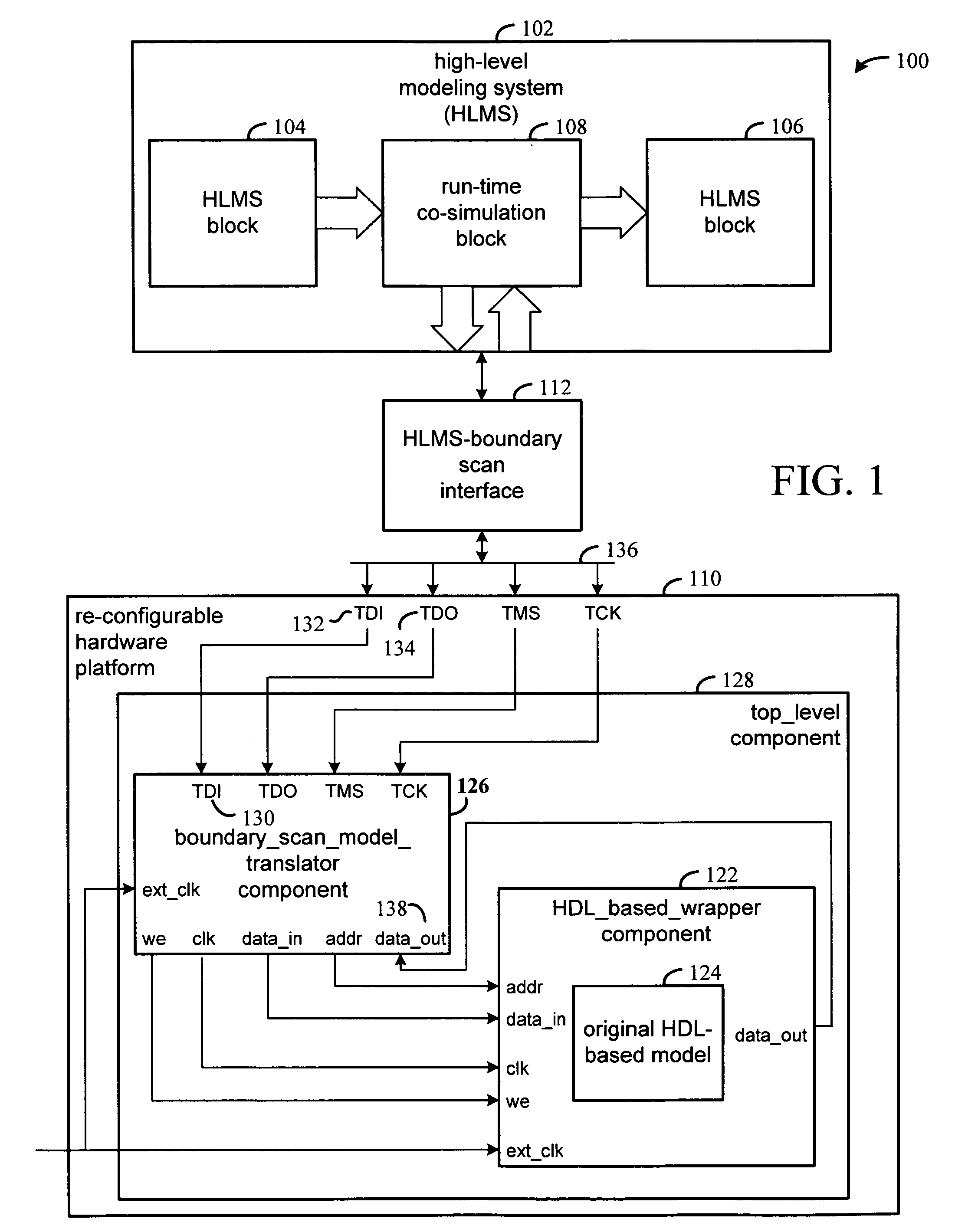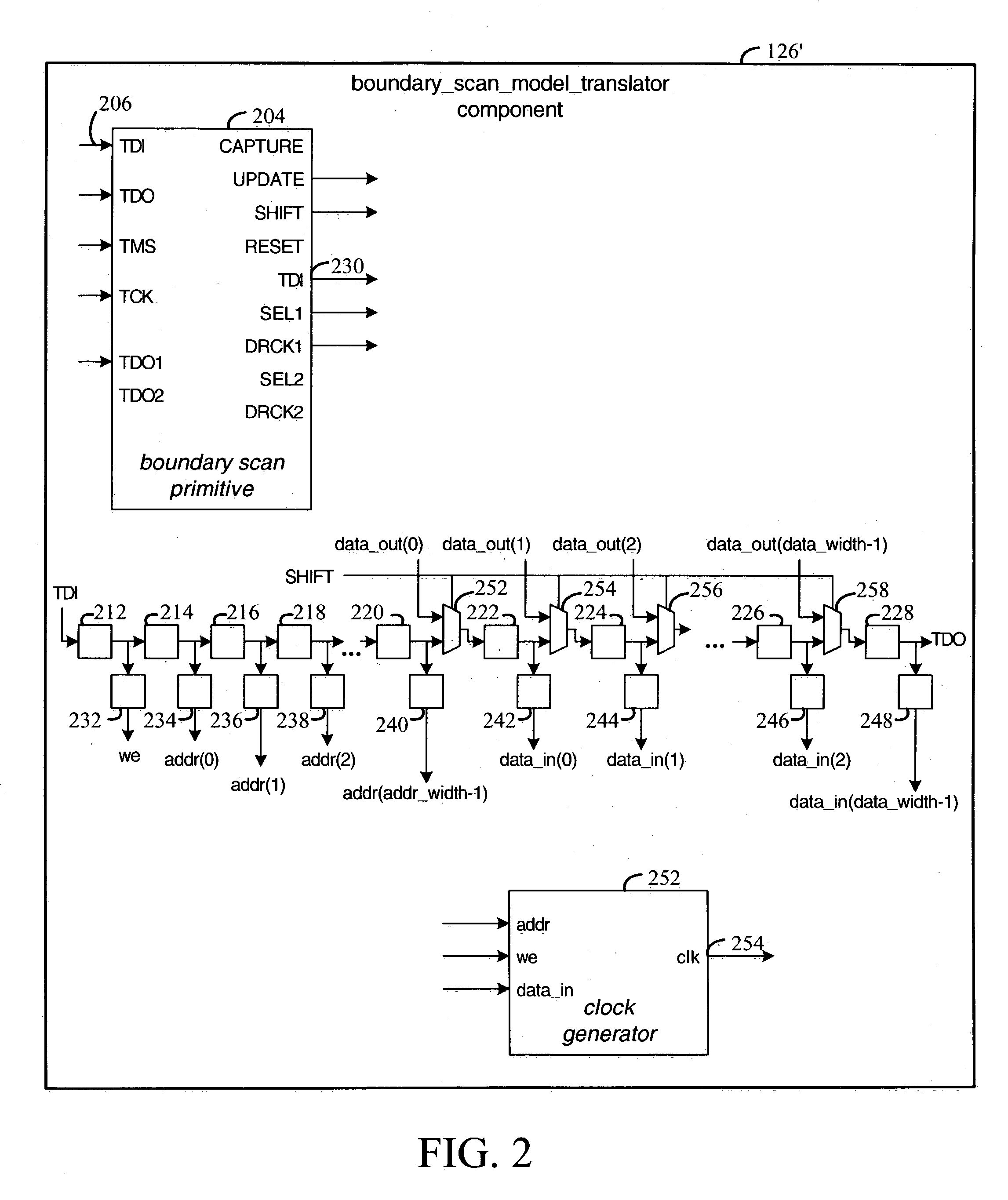Co-simulation via boundary scan interface
a boundary scan and interface technology, applied in the direction of cad circuit design, program control, instruments, etc., can solve the problems of non-trivial creation from scratch, burden of obtaining suitable logic cores for implementing interfaces on devices, and substantial barriers for designers seeking to exploit the advantages of co-simulation
- Summary
- Abstract
- Description
- Claims
- Application Information
AI Technical Summary
Benefits of technology
Problems solved by technology
Method used
Image
Examples
Embodiment Construction
[0014]The various embodiments of the invention permit the same interface to be used for co-simulation on a reconfigurable hardware platform that may be hosted on any of a variety of board-level configurations. This is accomplished in an example embodiment through use of an interface that generally functions according to the Joint Test Action Group (JTAG) “Standard Test Access Port Boundary-Scan Architecture” (“boundary scan” for brevity). The boundary-scan architecture generally defines a 5-pin serial protocol for accessing and controlling the signal-levels of pins of a digital circuit. The broad adoption of this protocol makes its use in co-simulation attractive on a variety of platforms.
[0015]FIG. 1 is a functional block diagram of a system for co-simulating a model in accordance with various embodiments of the invention. The HLMS 102 hosts HLMS blocks 104 and 106 along with runtime co-simulation block 108. During co-simulation, output from HLMS block 104 is provided to co-simulat...
PUM
 Login to View More
Login to View More Abstract
Description
Claims
Application Information
 Login to View More
Login to View More - R&D
- Intellectual Property
- Life Sciences
- Materials
- Tech Scout
- Unparalleled Data Quality
- Higher Quality Content
- 60% Fewer Hallucinations
Browse by: Latest US Patents, China's latest patents, Technical Efficacy Thesaurus, Application Domain, Technology Topic, Popular Technical Reports.
© 2025 PatSnap. All rights reserved.Legal|Privacy policy|Modern Slavery Act Transparency Statement|Sitemap|About US| Contact US: help@patsnap.com



